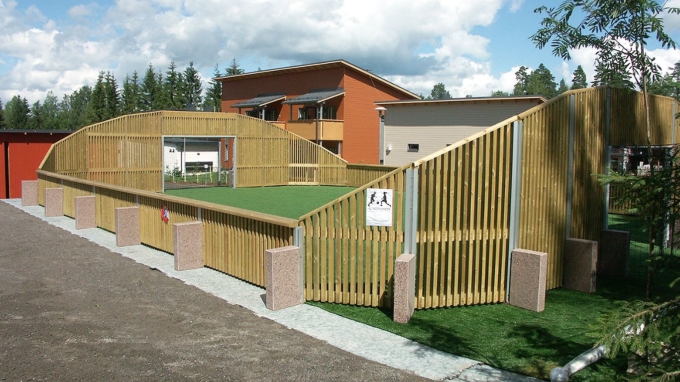
Impregnated timber is manufactured by pressure impregnating the sap wood part of timber in a pressurised cylinder.
In Finland, the pressure treated timber is Redwood (Pine), which is impregnated with a copper-based agent (C impregnation) to classes A and AB.
Class A timber is used in applications, where the timber is in contact with earth or water, such as frames and foundations. All 48mm and thicker timber is impregnated to class A. Class AB is aimed only for use above ground. There are other colouring options: brown is available as well as green.
A class end uses are among other terraces and deckings, pergolas, jetties, stairs, fencing, beams, handrails, flower boxes, children’s play areas and exterior cladding.
Impregnated boards are marked with either yellow (Class AB) or white (Class A) stickers, which also states the producer’s name, treatment class and the impregnation agent product name.
Impregnated timber must not be recycled like untreated timber but using specific recycling or collection points.

